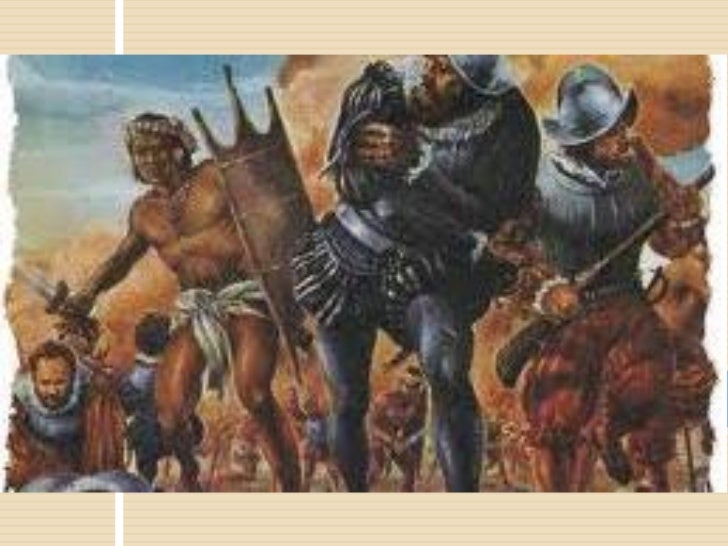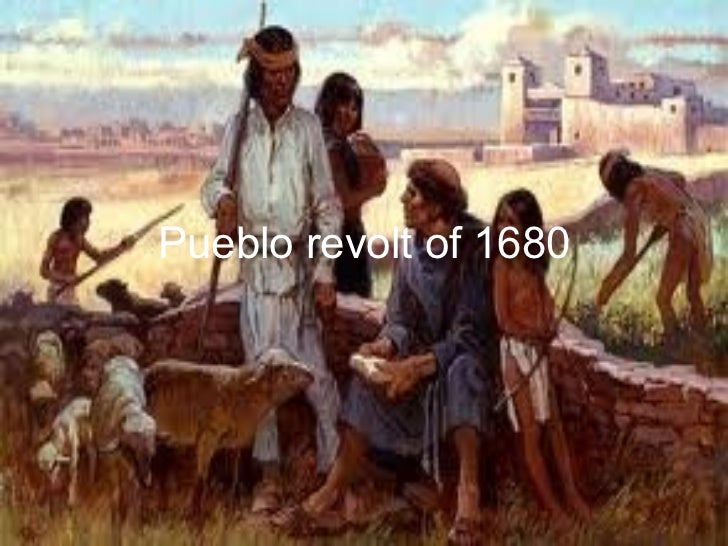
The Unbowed Spirit: A Legacy of Resistance in the Pueblo Revolt of 1680
In the arid, sun-baked lands of what is now New Mexico, a story of unparalleled resistance unfolded in the late summer of 1680. It was a tale not of a small skirmish or a localized rebellion, but of a meticulously planned, widespread uprising that would forever alter the course of indigenous-colonial relations in North America. The Pueblo Revolt, an extraordinary feat of inter-tribal coordination and a desperate cry for freedom, saw the native peoples of the region successfully expel their Spanish colonizers, reclaiming their ancestral lands and traditions for a remarkable twelve years.
This event, often overshadowed by other narratives in American history, stands as the most successful indigenous revolt against European colonization on the continent. Its echoes resonate even today, reminding us of the enduring power of culture, the high cost of oppression, and the unyielding human spirit in the face of tyranny.

The Crucible of Oppression: Seeds of Rebellion
For nearly a century before the revolt, the Pueblo peoples had endured the brutal realities of Spanish colonial rule. Since Juan de Oñate’s arrival in 1598, establishing the colony of Santa Fe de Nuevo México, the Spanish had imposed a dual system of exploitation: the encomienda and the Franciscan missions.
The encomienda system forced Pueblo men, women, and children into a cycle of forced labor, demanding tribute in crops, textiles, and personal service. They toiled in Spanish fields, spun cotton, and built colonial structures, often under harsh conditions and with little to no compensation. This economic exploitation was compounded by the zealous efforts of Franciscan friars who sought to eradicate native spiritual practices and convert the Pueblo to Catholicism. Kivas (sacred ceremonial chambers) were destroyed, Kachina masks burned, and traditional dances forbidden. Pueblo religious leaders, or caciques, were persecuted, publicly flogged, imprisoned, or even executed for practicing their ancestral beliefs.
"They burned the churches, sacked the convents, and profaned the sacred images," recounted Spanish chroniclers, detailing the ferocity of the Pueblo’s backlash against this religious suppression. This was not merely an economic or political rebellion; it was a spiritual war for the very soul of the Pueblo people.
Adding to the suffering were devastating droughts that plagued the region in the 1670s, leading to famine and increased raids by Apache and Navajo tribes. The Spanish, weakened themselves, offered little protection and often blamed the Pueblo’s suffering on their failure to fully embrace Christianity. The cumulative weight of forced labor, religious persecution, disease, and starvation created an unbearable pressure cooker. The Pueblo, distinct in their various languages and traditions, found common ground in their shared oppression.
The Unseen Weave of Resistance: Po’pay’s Vision
The architect of this unprecedented unity was Popé (or Po’pay), a Tewa religious leader from Ohkay Owingeh (San Juan Pueblo). Imprisoned and flogged in 1675 along with dozens of other Pueblo spiritual leaders for "sorcery" and idolatry, Po’pay emerged from his ordeal with a fiery resolve. He retreated to Taos Pueblo, a more remote and less accessible community, where he began to meticulously plan the uprising.
Po’pay understood that for the revolt to succeed, it had to be simultaneous and absolute. Any localized rebellion would be swiftly crushed by the Spanish, whose forces, though numerically smaller, possessed superior weaponry and organizational structure. His genius lay in his ability to transcend the traditional rivalries and linguistic barriers that had historically divided the Pueblo communities. He traveled secretly from pueblo to pueblo, weaving a network of trust and shared purpose, delivering his message of liberation.

A fascinating detail of this clandestine coordination was the use of knotted cords. Each knot represented a day, and the final knot signaled the precise moment to rise up. These cords were distributed to the various Pueblo leaders, who would untie a knot each morning, counting down to the designated day: August 10, 1680. This simple yet ingenious method ensured synchronized action across hundreds of miles, a logistical marvel in an era without modern communication.
The plan nearly unraveled when Spanish authorities caught wind of the plot just days before the scheduled revolt. Two Pueblo messengers were captured, revealing the impending uprising. In a swift and decisive move, Po’pay moved the date forward by a day, to August 10th, ensuring the Spanish had no time to prepare their defenses.
The Storm Breaks: A Day of Reckoning
On that fateful morning of August 10, 1680, the storm broke. From Taos in the north to Isleta in the south, the Pueblo unleashed their pent-up fury. Churches were torched, Spanish homes ransacked, and settlers, friars, and soldiers alike were targeted. The coordinated nature of the attack caught the Spanish completely off guard. Families were massacred, and priests were killed, often in their own churches.
"The Indians came out of the canyons and mountains like a flood," wrote Governor Antonio de Otermín, describing the overwhelming numbers of Pueblo warriors. Approximately 400 Spanish colonists, including 21 of the 33 Franciscan friars in the province, were killed in the initial onslaught. This represented roughly a quarter of the entire Spanish population in New Mexico.
The surviving Spanish, numbering around 1,000, including Governor Otermín, converged on Santa Fe, barricading themselves within the Palace of the Governors. The Pueblo warriors, estimated to be several thousand strong, laid siege to the capital. For nine days, the Spanish endured a relentless assault, cut off from water and food, facing a foe determined to reclaim their land.
On August 21st, desperate and outnumbered, Governor Otermín ordered a daring breakout. The Spanish, mounted and heavily armed, managed to cut a path through the Pueblo lines, beginning a grueling retreat southwards. They marched for weeks, suffering from hunger and exhaustion, eventually reaching El Paso del Norte (modern-day Ciudad Juárez, Mexico). New Mexico was, for the first time in nearly a century, free of Spanish colonial rule.
A Brief, Fragile Autonomy: The Pueblo Interregnum
The twelve years following the revolt, often referred to as the "Pueblo Interregnum," marked a unique period of self-governance. Po’pay emerged as the dominant leader, establishing a theocratic government aimed at purifying Pueblo culture of Spanish influence. Churches and mission buildings were systematically destroyed, Spanish tools and crops were sometimes abandoned, and the use of the Spanish language was forbidden. Baptismal names were shed in favor of traditional Pueblo names, and rituals like Kiva ceremonies and Kachina dances were revived.
However, this period of freedom was not without its challenges. Po’pay’s rule, while initially celebrated, became increasingly authoritarian. He demanded absolute obedience, punishing those who clung to any Spanish custom or challenged his authority. Internal dissent arose, fueled by traditional rivalries between pueblos, disputes over resources, and the continuing pressures of drought and Apache raids. Some pueblos, particularly those in the south, had become more acculturated and struggled to fully revert to pre-contact ways. Po’pay’s vision of a unified, purified Pueblo society proved difficult to maintain in practice, and his influence waned in his later years. He died around 1688, leaving a power vacuum that further destabilized the Pueblo confederation.
The Return of the Conquistadors: A Nuanced Reconquest
The Spanish, licking their wounds in El Paso, never truly relinquished their claim to New Mexico. In 1692, Don Diego de Vargas Zapata y Luján Ponce de León was appointed governor and tasked with the reconquest. Vargas, a shrewd and pragmatic leader, initially adopted a different strategy. He understood that a direct, brutal military campaign might not succeed against a now-experienced and still-resistant Pueblo population.
His first entry into New Mexico in 1692 was largely "bloodless." He approached the pueblos with promises of clemency, forgiveness for the revolt, and a commitment to respect Pueblo lands and customs if they swore allegiance to the Spanish Crown and Catholicism. Many pueblos, weary from internal strife, drought, and constant Apache raids, cautiously accepted. Vargas entered Santa Fe peacefully, reclaimed the Palace of the Governors, and declared the reconquest complete.
However, this "bloodless" reconquest was short-lived. The Pueblo soon realized that Spanish promises were not entirely genuine, and the old patterns of tribute and religious pressure began to re-emerge. Resistance flared up again in 1696, but this time, the Spanish were better prepared, and the Pueblo were more divided. Vargas, though still aiming for a less destructive approach, was forced to use force, and the subsequent suppression was brutal, with many Pueblo warriors executed and entire communities dispersed. By 1696, Spanish authority was firmly re-established.
Echoes Through Time: A Lasting Legacy
Despite the ultimate reconquest, the Pueblo Revolt was far from a failure. Its legacy is profound and enduring. The Spanish, having learned a bitter lesson, adopted a more accommodating approach to their re-established rule. They significantly reduced forced labor demands, granted the Pueblo legal titles to their lands (which often persist to this day), and, crucially, tolerated a greater degree of religious syncretism. Pueblo people were allowed to practice their traditional ceremonies, often incorporating Catholic elements, and maintain their kivas, albeit sometimes in secret. This allowed Pueblo culture and religion to survive and thrive in a way that was often impossible for other indigenous groups under European domination.
The Pueblo Revolt stands as a powerful testament to the resilience and determination of indigenous peoples. It shattered the myth of European invincibility and demonstrated that coordinated resistance could achieve liberation, even if temporarily. It forced a colonial power to adapt and compromise, leading to a unique cultural blend that defines New Mexico today.
For the Pueblo people, the Revolt of 1680 is not just a historical event; it is a living memory, a foundational narrative of their identity and survival. It reminds them of their ancestors’ courage, their unbreakable spirit, and their unwavering connection to their land and traditions. In a world still grappling with questions of sovereignty, cultural preservation, and historical justice, the story of the Pueblo Revolt continues to inspire, a powerful echo of freedom across the centuries.


